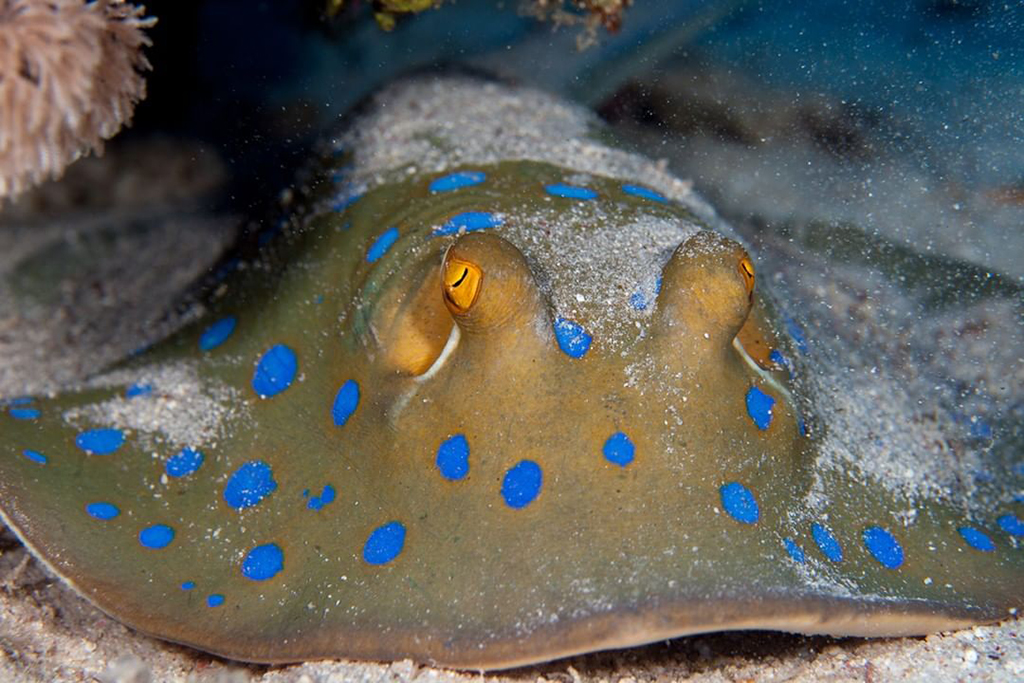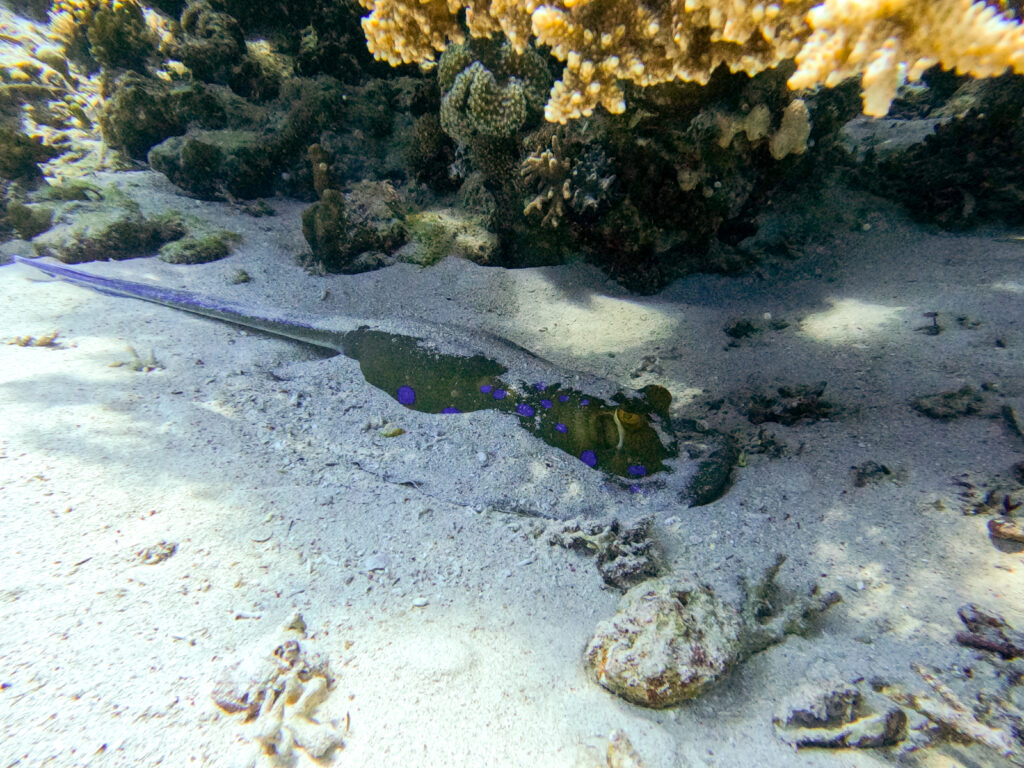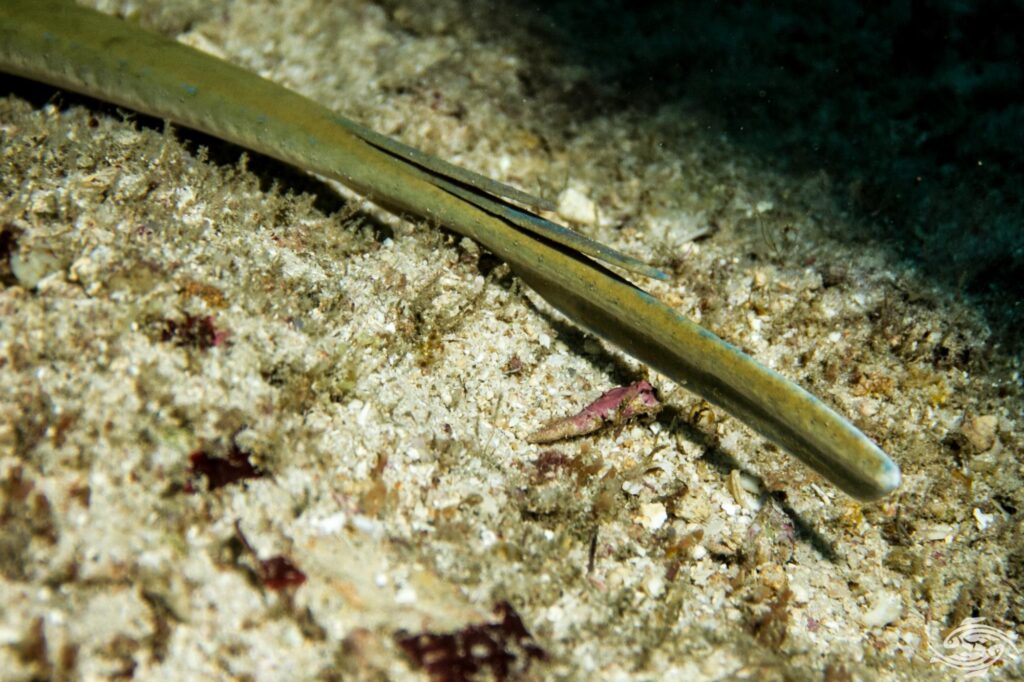Bluespotted Ribbontail Stingray
Hiding under rocks are the stingrays! The Bluespotted Ribbontail Rays have a yellow green to yellow brown colored body with a prominent set of eyes that protrude above the body. The eyes are a bright yellow color and they have the ability to change the size of their pupils. The body is covered in bright blue spots of varying sizes and each stingray has its own pattern of spots. The tail extends back from the main body and has a prominent blue stripe down either side. Towards the end of the tail are two spikes with venom.
Stingrays got their name from their long and poisonous tail. Blue Spotted Stingray adults can grow to 25 cm (10 inches) not including the tail. Their tail isn’t meant for hunting though. It’s just to defend themselves. Some predators are hammerhead sharks and bottlenose dolphins.
They hunt at night for sand worms, shrimps, hermit crabs, clams, mussels and small fishes. They have highly developed electromagnetic sensors and lateral lines which allow them to detect their prey hidden in the sand. Once found they envelop the prey with their disc and use their powerful mouths to crush them..
Being nocturnal feeders, during the day Bluespotted Ribbontail Rays are usually seen hiding under the over hang of corals. In the shadows the blue spots give quite effective camouflage. They will occasionally be seen hidden in the sand but this is not common. When they are hidden in the sand and a diver approaches too close they will often break cover and take off at a high speed. Although the Bluespotted Ribbontail Rays are very calm, peaceful and almost never attack divers they should not be underestimated.
Their tail has either one or two spines on it which have venom in them. They can give an extremely painful sting and one should always stay at a safe distance. The treatment for such a sting would be hot water. Beside from the venom the spines are capable of giving a deep physical injury which can be life threatening because of the loss of blood. Although dangerous these guys would truly be a cool sight to see.
- Stingrays can detect their prey because of their electromagnetic sensors and once they do they wrap around them and crush them with the stingray’s powerful jaw.
- Sometimes the blue spotted stingrays’ spots can appear to glow!
- Female rays can have up to seven babies per litter, and the newborn rays already have the distinctive blue spots at birth.
- Can swim into shallows during high tide and hide in caves during low tide.
- They have 1-2 venomous spines at the back tip of their tails.






